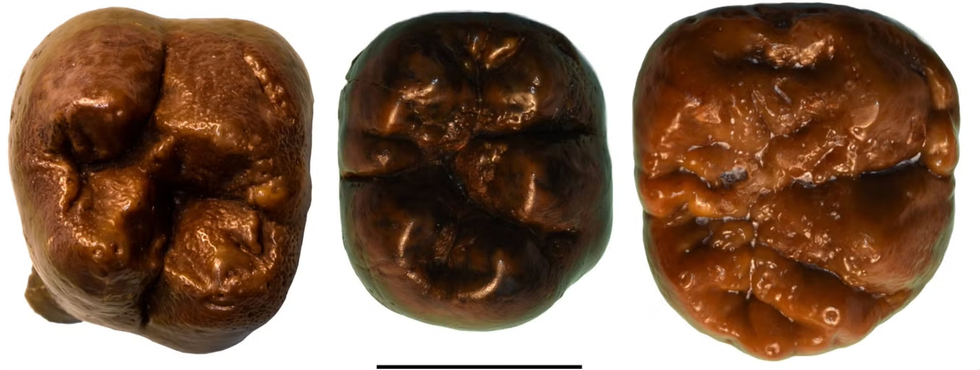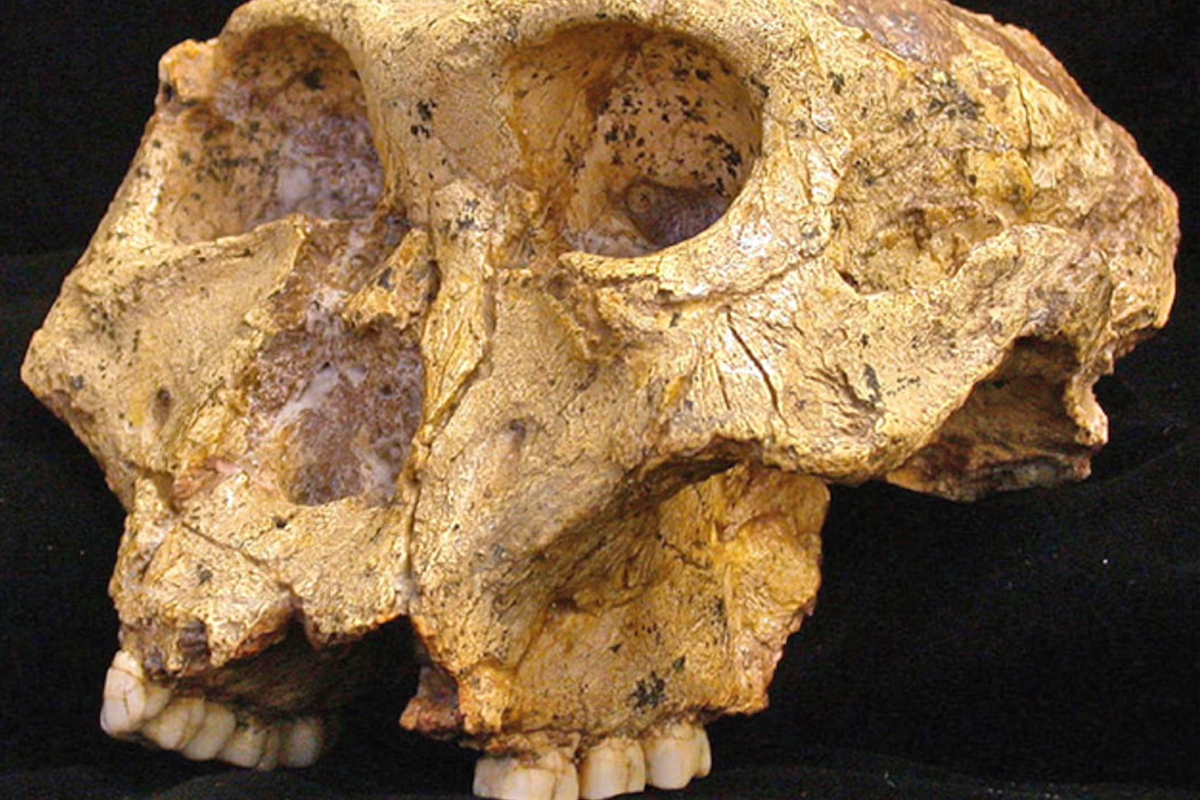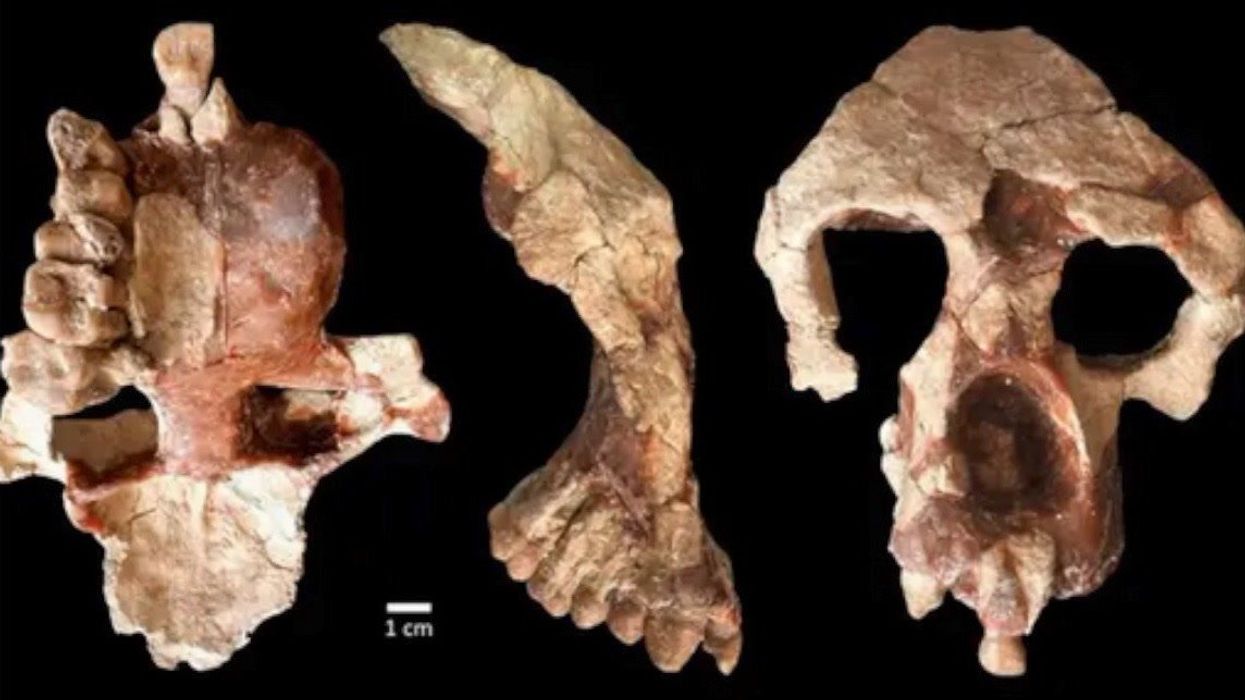Sinead Butler
Jun 14, 2025
This Ape Skull is Over 8 Million Years Old and Is Raising …
ZMG - Amaze Lab / VideoElephant
We're always learning something new about human evolution, and this time, ancient teeth can provide some interesting details of our connection to our fossil ancestors.
You know the enamel that forms on the outer layer of our teeth? Gross, we know, but that's the key to the latest discovery from a new study published in the Journal of Human Evolution.
Well, actually it's the lack of enamel that experts are interested in - more specifically, tiny, shallow pits in fossil teeth which may not an indication of malnutrition or disease after all, according to Ian Towle, a Biological Anthropology research fellow at at Monash University who wrote about the research in The Conversation.
He noted how the pits were found in the South African species Paranthropus robustus (a close relative of our own genus Homo) and visually are "uniform, circular and shallow," and "subtle, regularly spaced, and often clustered in specific regions of the tooth crown."

New research has proven that these types of pits were also discovered in Paranthropus species in eastern Africa and even some Australopithecus, a group that may have brought about Homo and Paranthropus.
Given these pits have been consistent across various factors (time, species and location), it seems there is a curious pattern...
To gain additional understanding, experts studied more than two million years of human evolution by looking at fossil teeth from hominins (humans and our closest extinct relatives) from the Omo Valley in Ethiopia (which included Paranthropus, Australopithecus and Homo some of the most recent hominin genera), and compared it with sites in southern Africa (Drimolen, Swartkrans and Kromdraai).
As a result of this detailed analysis, pitting was able to be tracked across evolution.
The findings? Eastern and southern Africa Paranthropus both had regular uniform pitting along with eastern African Australopithecus teeth from a whopping three million years ago. Meanwhile there was a lack of uniform pitting for southern Africa Australopithecus and Homo.

So could stress and disease have caused this uniform pitting? Well, for this to have occurred, it would've had of "correlated with tooth size and enamel thickness" and "affect both front and back teeth," according to Towle. But in this instance, it does not...
Another reason to rule out stress is that horizontal bands are usually formed if this is the cause and when stressed affects all teeth that are growing - and this wasn't the case here.
Therefore, researchers believe the pitting is not a defect but rather developmental and genetic, although we're still not entirely sure of its function. But it is theorised that the pitting may have been a consequence in the way enamel formed.
How can this uniform pitting help us further understand human evolution?
Traits such as enamel thickness, cusp shape, and wear patterns are used to help identify species, and pitting could be an another tool to aide with this.
"More research is also needed to fully understand the processes behind the uniform pitting before it can be used routinely in taxonomic work," Towle said. "But our research shows it is likely a heritable characteristic, one not found in any living primates studied to date, nor in our own genus Homo (rare cases of amelogenesis imperfecta aside).
He added, "As such, it offers an exciting new tool for exploring evolutionary relationships among fossil hominins."
What's next for researchers?
Towle highlighted Homo floresiensis, the so-called “hobbit” species from Indonesia which appears to display a similar type of pitting experts have been studying.
If further investigation confirms this, then it could be the case that there's "an evolutionary history more closely tied to earlier Australopithecus species than to Homo," although there are also potential it could be skeletal and dental disease and therefore more analysis needs to be conducted to find this out for sure.
Elsewhere, Untouched ancient city was discovered dating back nearly 3,000 years, and Construction worker discovers 1,500-year-old tomb complex in Syria.
How to join the indy100's free WhatsApp channel
Sign up to our free indy100 weekly newsletter
Have your say in our news democracy. Click the upvote icon at the top of the page to help raise this article through the indy100 rankings.
Top 100
The Conversation (0)













